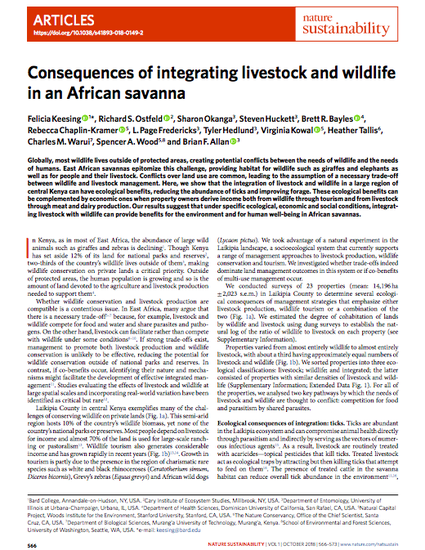
Article
Consequences of integrating livestock and wildlife in an African savanna
Nature Sustainability
(2018)
Abstract
Globally, most wildlife lives outside of protected areas, creating potential conflicts between the needs of wildlife and the needs of humans. East African savannas epitomize this challenge, providing habitat for wildlife such as giraffes and elephants as well as for people and their livestock. Conflicts over land use are common, leading to the assumption of a necessary trade-off between wildlife and livestock management. Here, we show that the integration of livestock and wildlife in a large region of central Kenya can have ecological benefits, reducing the abundance of ticks and improving forage. These ecological benefits can be complemented by economic ones when property owners derive income both from wildlife through tourism and from livestock through meat and dairy production. Our results suggest that under specific ecological, economic and social conditions, integrating livestock with wildlife can provide benefits for the environment and for human well-being in African savannas.
Disciplines
Publication Date
October, 2018
Citation Information
Felicia Keesing, Richard S. Ostfeld, Sharon Okanga, Steven Huckett, et al.. "Consequences of integrating livestock and wildlife in an African savanna" Nature Sustainability Vol. 1 (2018) p. 566 - 573 ISSN: 2398-9629 Available at: http://works.bepress.com/brett-bayles/5/
